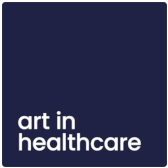“I didn’t think I could see like that….to put pencil to paper in that way…”
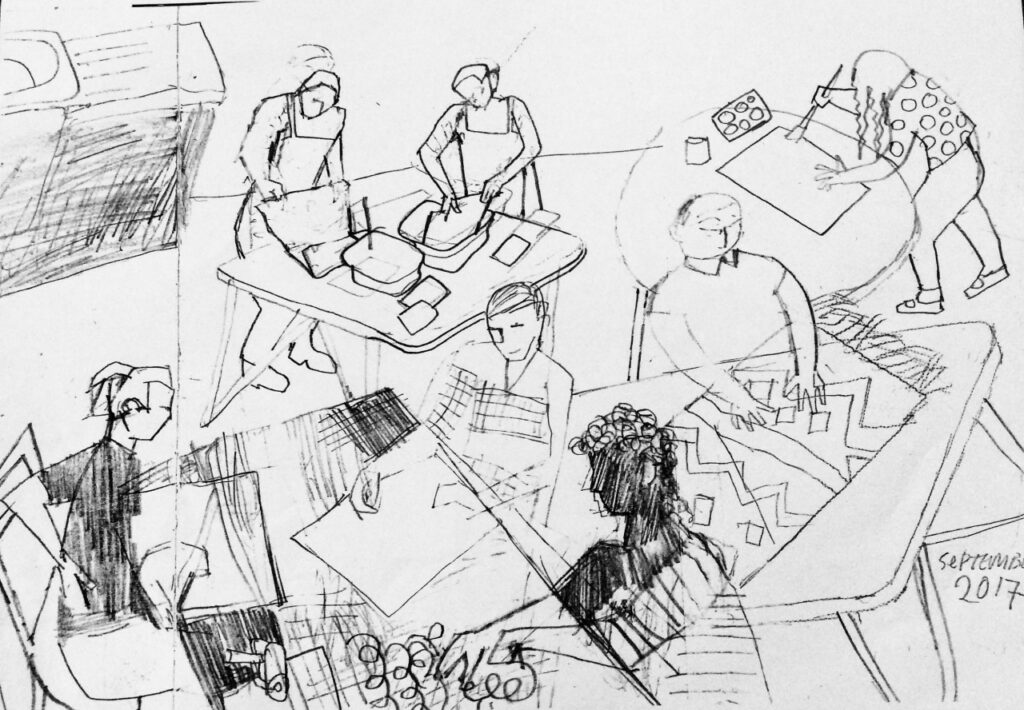
There are instances when health and wellbeing suffers, that something in addition to a medical solution is needed. Or in some cases in replace of; research suggests that a high percentage of GP appointments concern social factors and don’t require a medical intervention at all.
Making ‘room for art’ and taking part in arts activity can impact positively and in some cases have a transformative effect on health and wellbeing. We see it time and time again in the work we do and are collecting evidence of this from our current Big Lottery Funded project ROOM FOR ART.
ROOM FOR ART is a series of visual arts workshops delivered by artists throughout Edinburgh using a social prescribing approach and occupational therapy supported model of 1:1s.
What is social prescribing?
Social prescribing is described by NHS Health Scotland as ‘an approach (or range of approaches) for connecting people with non-medical sources of support or resources within the community which are likely to help with the health problems they are experiencing’. There is a growing evidence base that social prescribing is a highly effective tool to support self-management of long term health conditions – in particular mental health (NHS Health Scotland)
The Scottish Government has made a commitment to social prescribing and recruiting 250 community link workers to work in general practice over the next few years. A lot of third sector organisations, particularly community health organisations work in this way already; prescribing art, gardening, exercise, cookery classes etc.
Our participants are ‘prescribed’ or ‘referred’ by GPs, nurses, Occupational Therapists, Link Workers as well as through other third sector organisations. Some participants have remarked on the importance of the referral process for getting involved.
‘I thought it was going to be all ‘happy clappy’; I wouldn’t have gone if my Doctor hadn’t suggested it…’
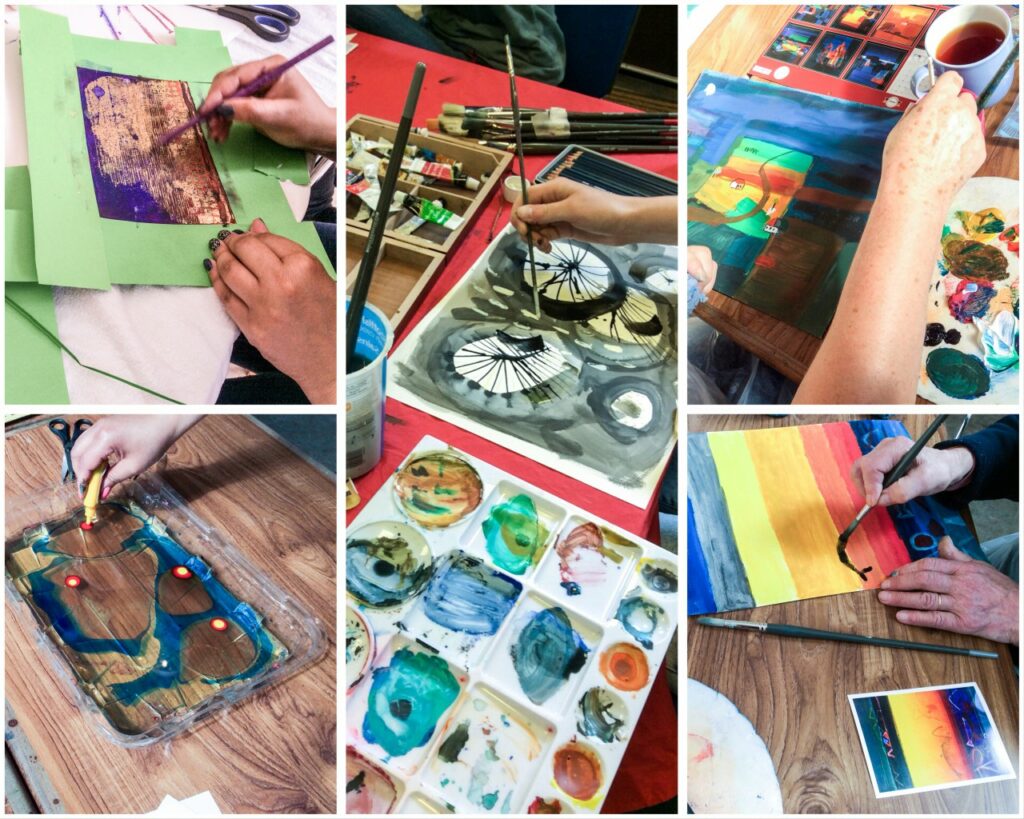
What is an occupational therapy supported model?
We always stress that no experience of art is necessary for our workshops and most people that get involved have not done any since school. But for anyone, trying the ‘unknown’ and coming along to a group workshop for the first time is daunting but this is especially true of those with health issues, particularly mental health. When we first piloted this project, we had no attendance at the first workshop; it was too big a jump to go from a referral. We needed a stepping stone and to combat the barriers to taking part we now hold 1:1 sessions with everyone prior to starting the workshops.
Not only does this act as an introduction, giving more information and putting people at ease, but we use an occupational therapy model to give participants space to discuss any anxieties or barriers to taking art and encourage them to set specific goals on how the workshops could enhance their wellbeing. This provides us with a really useful framework to give the participant focus, purpose and motivation for attending and also enables us to tailor activities from the outset.
Who are we working with?
The project is mainly through referrals but we do take some self-referrals if we find the need is there. Some of the reasons people are referred onto ROOM FOR ART are:
- Experience of loss, isolation and/or loneliness which is impacting negatively on their health and wellbeing
- Experiencing depression and/or stress
- Co-morbity of diagnosed anxiety/depression alongside physical/other health issues.
- Unemployed due to ill-health
- Undiagnosed needs – carers needing time for themselves for mental health
- Constrained in ability to function socially due to poor health
- A significant reliance on primary care – for example some people visiting GPs for company.
‘We came together; we didn’t talk about why… it was just great knowing that people are in the same boat…’
Why ‘prescribe’ art?
There is evidence that arts on prescription can be helpful in developing social capital, personal skills and self-esteem. Some of the reasons our participants so far have identified for getting involved:
- To attend something (anything!) that gets them out the house and part of a routine
- To develop social skills
- Feel proud of something
- To find techniques to help focus
- Use art to occupy mind and distract from thoughts and problems
- To use art to express how they are feeling
- Find a way to relax through art
- To try something totally new
‘It helped my brain….I have a dormant life…routine…this gave me the opportunity to think about new things’ (participant)
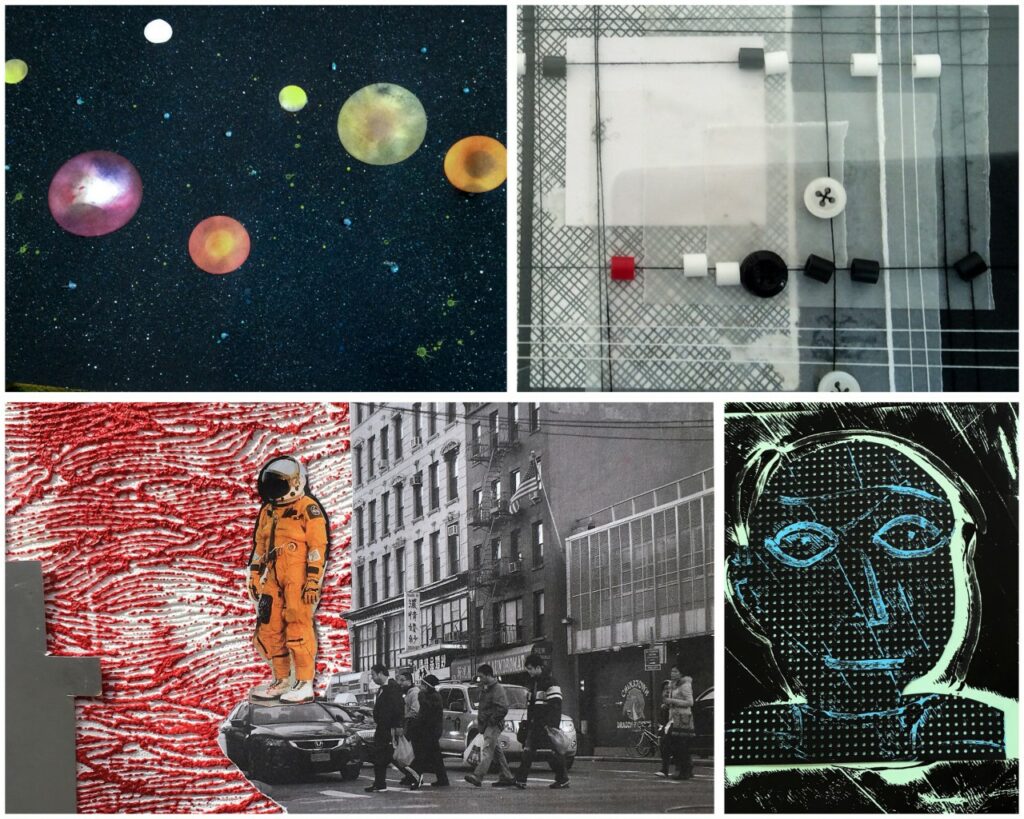
Although the term prescription is useful to describe the referral process, especially when working with GPs, the workshops are NOT prescriptive. The activities are very much shaped by participants and their needs and we don’t know at the start what the outcome will be. It is important for us to focus on participant’s interests, on their strengths and what they CAN do, rather than a deficit model; focussing on illness / issue that brought them here. One of the most common statements our artists hear in art workshops is ‘I can’t draw…I’m no good at art…’ but they are expert facilitators and communicators and use techniques to encourage creativity in anyone, no matter their experience of art. At first the artist will design structured activity to try a wide variety of materials but eventually, everyone develops their own interest and style and the atmosphere becomes that of an art studio rather than a class. Examples of art work show the diversity of interests of participants; from collage assemblages in CD cases to figurative wire sculptures, from paintings of old Edinburgh to bold abstract work. We like to bring in works from our collection as this is a unique resource but where in the past workshops would be designed around a work from the offset, with this project we bring in the collection at a later date and works that relate to art participants are already making or they dictate what in particular they would like to see.
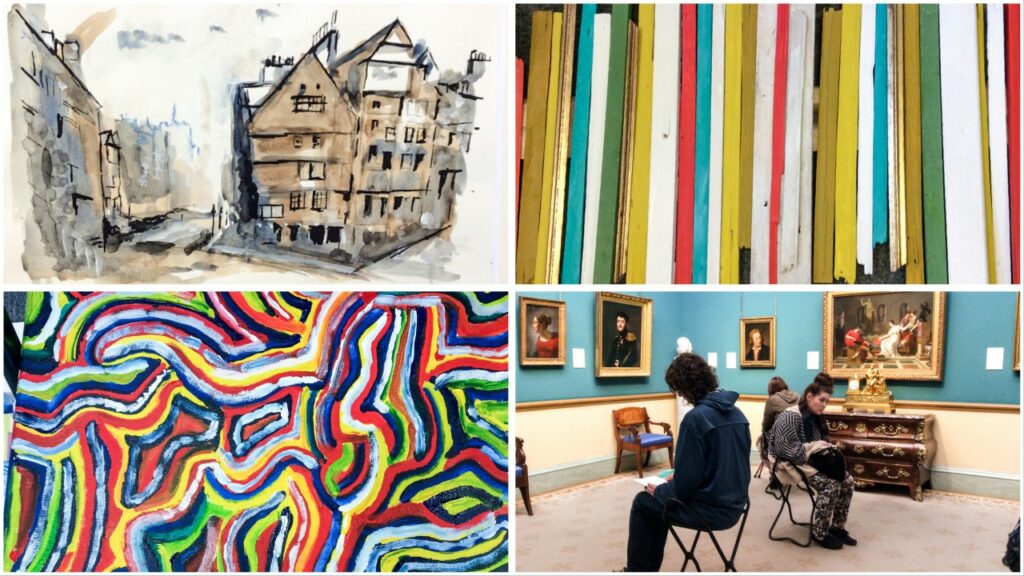
What happens next……
Typically ROOM FOR ART comes in 10 week blocks….some people need only 5 weeks, others need a ‘repeat prescription’. We hold a 1:1 at the end of the project and revisit those goals and sign post people to other opportunities in the area. If there is the demand, we are supporting people to continue with their groups.
Where?
So far we have focussed on areas of multiple deprivations where there is typically more health inequalities and have held ROOM FOR ART workshops all across Edinburgh in libraries, Health Centres, Community Centres and Art Centres. Regular groups have formed at Piershill Library, North Edinburgh Arts, WHALE Arts and at VOCAL: Support for Carers in Edinburgh and Midlothian with a new group planned for the new year at Edinburgh Printmakers.
We have formed and developed multiple partnerships from a range of fantastic organisations from within the community such as The Health Agency, Wester Hailes and Pilton Community Health Projectand from within the NHS and are learning a lot from the people we are working with.
‘I climbed a mountain…it’s given me the confidence to go out on my own’
This is a 3 year project and we will keep you updated on our learning as we go. In the meantime, if you are interested in learning more please contact Iona McCann 0131 555 7638 or you can email us outreachmanager@artinhealthcare.org.uk
If you are interested in referring someone to ROOM FOR ART please contact us or fill in and send us this referral form.
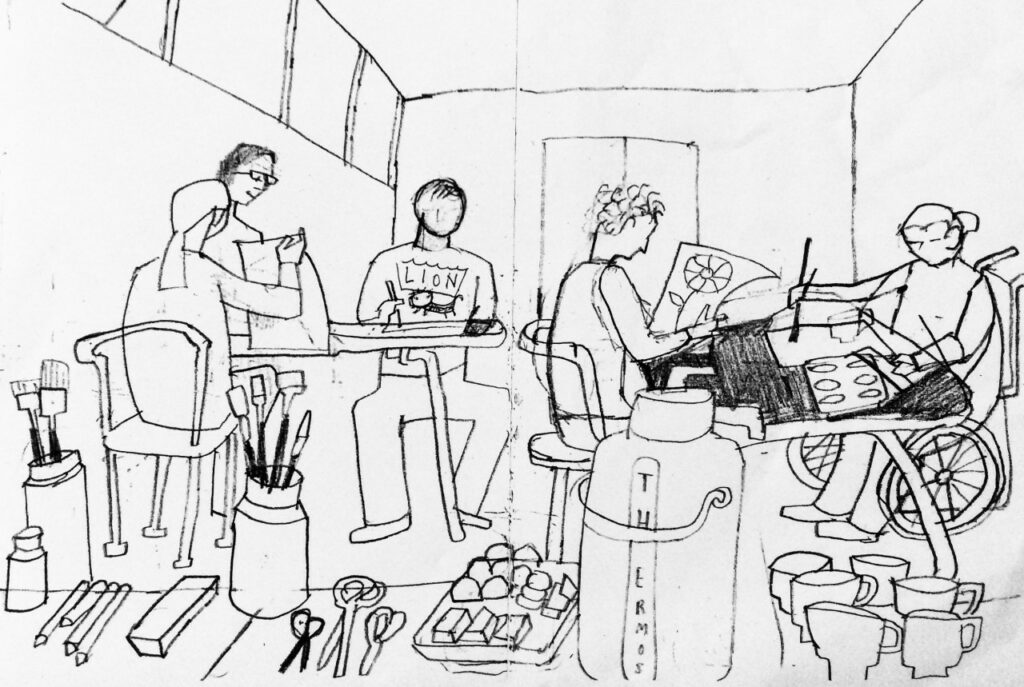
13 December 2017 by
Art in Healthcare
